Colorado Scientific Society Past Presidents’ Dinner
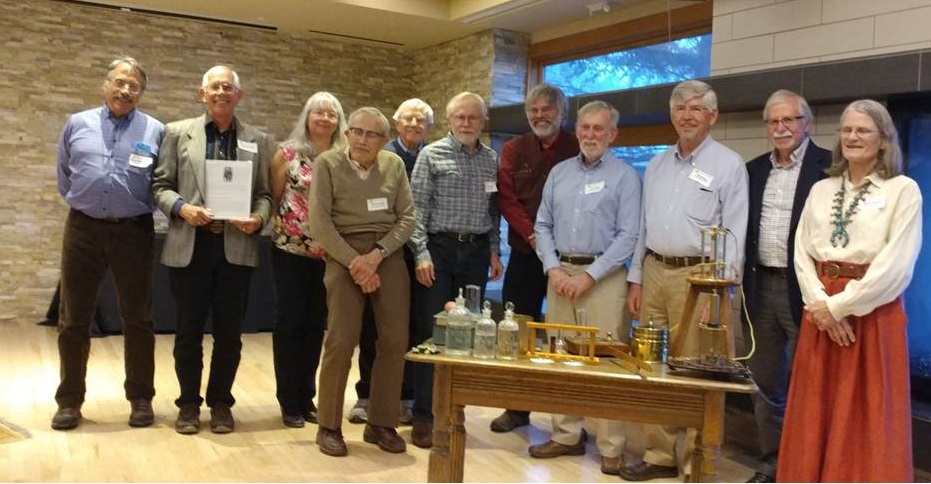
From right: Peter Barkmann 2016, Pete Modreski 2012, Lisa Fisher 2011, Bruce Bryant 1985, Barney Poole 1990, Karl Kellogg 1997, Emmett Evanoff 2004, Jim Cappa 2003, Bill Nesse 2007, Paul Morgan 2015, Marith Reheis 2017
Colorado Scientific Society 2024 Past Presidents’ Dinner and Program
Thursday, September 19, 2024
This is also the Colorado Scientific Society’s September meeting.
Dinner and presentation at the Mount Vernon Canyon Club
24933 Clubhouse Circle, Golden, CO 80401
(on Lookout Mtn., off I-70)
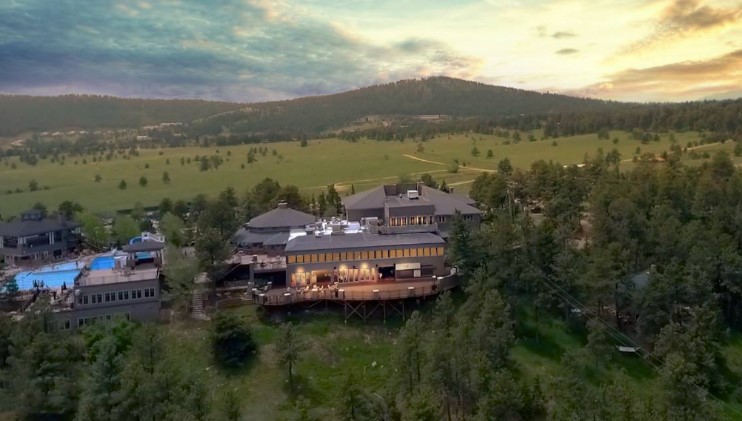
We were on the main floor and dining room.
There was a large balcony for views and discussions of the Front Range.
Social Time, arrive 5:00 – 5:30 pm
Dinner 6:00 pm
Program 7:00 pm
Everyone is welcome. Make your dinner reservations below.
The presentation will also be available via Zoom.
The link to join the Zoom meeting will be posted here later.
Link to Join CSS Past Presidents’ Dinner presentation via Zoom
CSS is inviting you to our meeting on Thursday, September 19th at 6:45 pm.
What do two geologists know about pandemics?
Economic cascades, tipping points, and the costs of a business-as-usual approach to COVID-19
David Goodwin, Denison University and Peter Roopnarine, California Academy of Sciences
Abstract: Both natural and human systems rely on complex networks of exchange. In natural systems, exchanges involve the transfer of energy (i.e., ecology), whereas anthropogenic systems are based on exchanges of goods, services, and currency (economy). Despite differences in components (plants and animals versus humans) and scope (ecosystems versus economies), both types of networks are sensitive to perturbations. Disruptions, whether natural or anthropogenic, are linked by basic thermodynamic principles that unite ecological and economic theory.
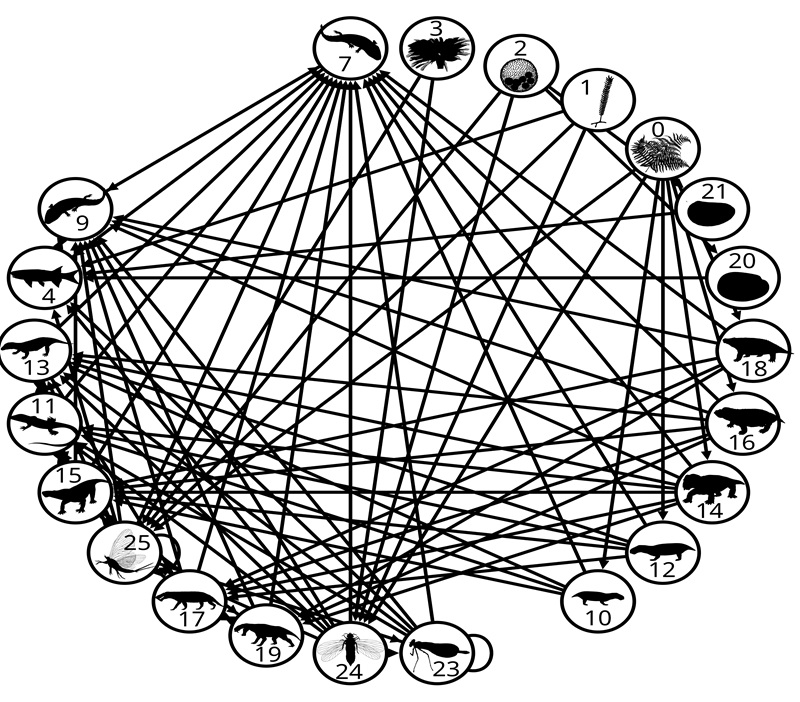
Plagues and pandemics are inevitable; they have impacted human cultures for thousands of years. Examples include plagues of the Roman Empire, the Black Death, disease among indigenous peoples spurred by colonization, and the recent COVID-19 pandemic. Plagues also closely parallel mass extinctions in some respects. In each case, they are linked by their ability to radically disrupt complex networks and force the development of novel, and often revolutionary, reorganization of ecological and socioeconomic structures.
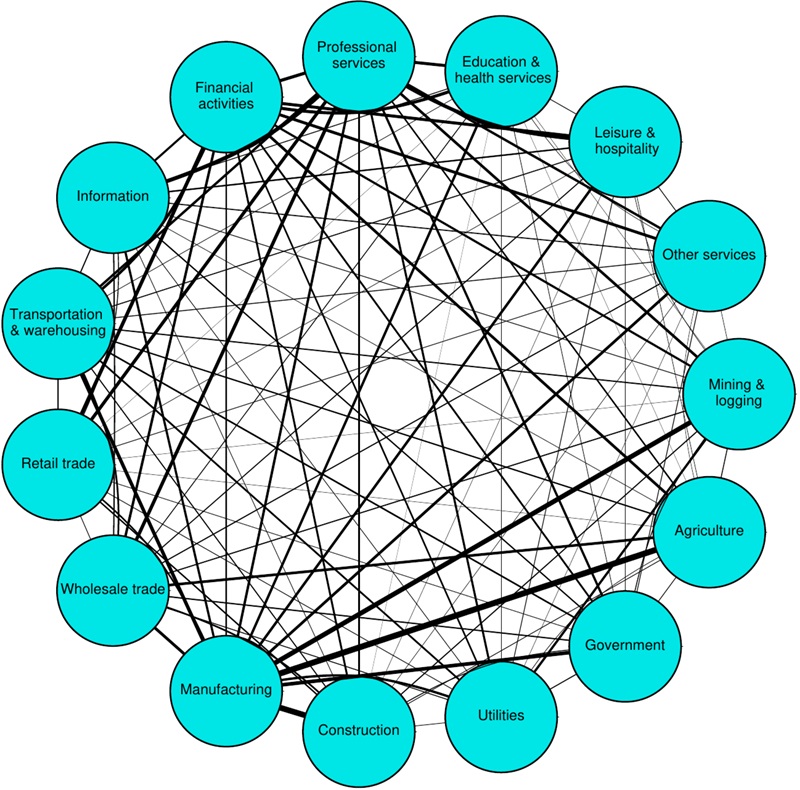
In this presentation we illustrate the utility of network models originally designed to simulate mass extinction dynamics, to understand counterfactual dynamics of the recent COVID-19 pandemic in which the economy remained open and active during the pandemic’s first year, thereby providing a baseline against which to compare actual levels of job losses. We developed an economic-epidemiological mathematical model to simulate outbreaks of COVID-19 in ten large socio-economic regions of California. Results show that job losses are an unavoidable consequence of the pandemic, because even in an open economy, debilitating illness and death among workers drive economic downturns. Although job losses in the counterfactual scenario were predicted to be less than those actually experienced, the cost would have been the additional death or disablement of tens of thousands of workers. Furthermore, whereas an open economy would have favored populous, services-oriented coastal areas in terms of employment, the opposite would have been true of smaller inland areas and those with relatively larger agricultural sectors. Thus, in addition to the greater cost in lives, the benefits of maintaining economic activity would have been unequally distributed, exacerbating other realized social inequities of the disease’s impact. Ultimately, the COVID pandemic revealed not only vulnerabilities in health systems, but also in economic and decision-making systems.
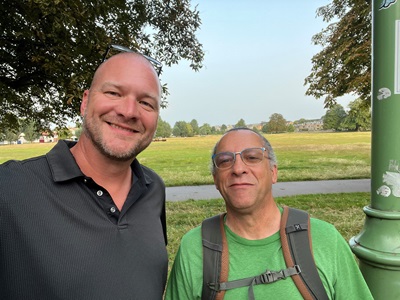
Peter Roopnarine is the Curator of Geology at the California Academy of Sciences in San Francisco. He has worked at the Academy since 1999. Peter holds degrees in Biology (BS; Mount Allison University), Oceanography (MS; Nova Southeastern University), and Geology (PhD; University of California, Davis). His research is transdisciplinary, with a focus on understanding the evolution of ecological systems, emphasizing paleontology, deep time, and perspectives on complexity dynamics. Much of Peter’s current research centers around global change biology, and how we can further develop our understanding of Earth’s past ecosystems to better forecast our future.
David Goodwin is a Professor of Earth & Environmental Sciences at Denison University in Granville, OH. David joined the faculty in 2003. He has degrees in Natural and Environmental Science (BS: Lyndon State College), Geology (MS; University of Montana), and Geoscience (PhD; University of Arizona). Dave’s research focuses on documenting and interpreting records of environmental variation archived in the hard parts of modern and fossil organisms. This is accomplished primarily through calibration of environmental conditions with skeletal archives: specifically, biogeochemical variations and patterns of shell growth.
Mount Vernon Canyon Club
24933 Clubhouse Circle
Golden, CO 80401
Formerly named The Mount Vernon Country Club, it is southwest of Lookout Mountain off of I-70.
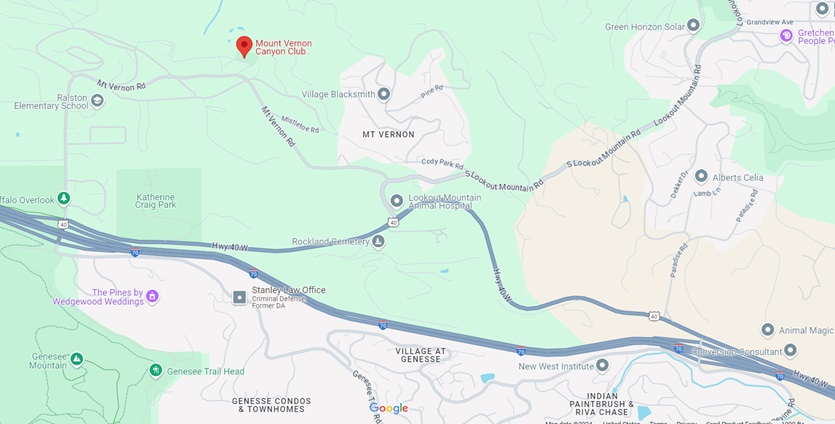
Open Mount Vernon Canyon Club on Google maps
Dinner Buffet Menu – – $60 regular, $25 students
[GF] means Gluten Free
Salads
- House Salad [GF]: field greens topped with shredded carrots, sliced radishes, cucumbers, and cherry tomatoes – choice of balsamic vinaigrette or ranch dressing
- Elotes Salad [GF]: grilled corn, chili lime mayo, arugula, cotija
Entrée Choices
- Thai Chicken [GF]: Frenched chicken breast, sweet chili glaze, roasted peanuts and cilantro
- Pan Seared Halibut [GF]: with sauce choron
Sides
- Rosemary roasted red bliss potatoes [GF]
- Green beans almondine [GF]
- Assortment of breads with butter
- Complementary Coffee, Tea, and Iced tea
Gourmet Dessert Display
Gourmet display of cookies, petit fours, seasonal tarts and cakes
Cash Bar
See over 140 years of Colorado Scientific Society Past Presidents.
caption id=”attachment_8212″ align=”alignnone” width=”1024″]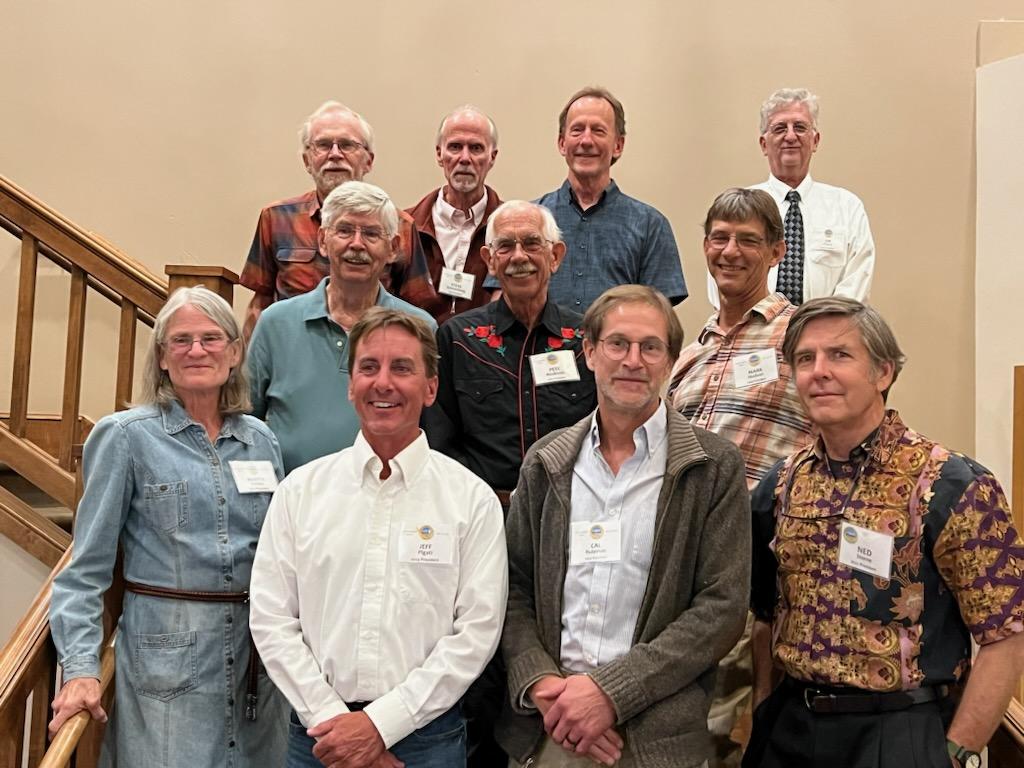 CSS Past Presidents at the 2024 CSS Past Presidents’ Dinner
CSS Past Presidents at the 2024 CSS Past Presidents’ Dinner
from bottom left: Marith Reheis 2017, Jeff Pigati 2024, Cal Ruleman 2023, Ned Sterne 2021, Bill Nesse 2007, Pete Modreski 2012, Mark Hudson 2000, Karl Kellogg 1997, Steve Sonnenberg 1992, Scott Minor 2010, Jim Paces 2020[/caption]
Colorado Scientific Society Past Presidents at 2024_Past Presidents Dinner in more detail.
View Zoom recording of What do two geologists know about pandemics?
Economic cascades, tipping points, and the costs of a business-as-usual approach to COVID-19
Watching this video is best in full screen. (It may sharpen up images.)
No passcode is needed to access this recording. Just click on the video.
Duration: 01:28:43
Colorado Scientific Society Emmons Lecture
The S.F. Emmons Lecture, which began in 1962, is a highlight of the Colorado Scientific Society’s activities and contributes not only to our standing in the scientific community but to the intellectual growth of our members and colleagues. The series is named in honor of the Society’s founder, S.F. Emmons. The lectures feature speakers that are recognized nationally or internationally as being at the forefront of research in some important facet of the earth sciences.
CSS April Meeting and Emmons Lecture
Tales from the Field:
Using Modern Earth to Assess Life on Ancient Mars
Thursday, April 18, 2024
Brian Hynek, Department of Geological Sciences and Laboratory for Atmospheric and Space Physics at the University of Colorado
This meeting was held at Calvary Church Golden.
Abstract: After two decades of intense exploration, it is clear that ancient Mars met all the requirements to support microbial life for at least 100s of millions of years. This includes an active hydrologic cycle hosting rivers, lakes, and potentially an ocean. We have also found many “dried up Yellowstones” on Mars and these are crucial habitats since most scientists believe that Earth’s life originated in similar settings and at a similar time in the planet’s history. One way to learn about ancient environments on Mars and the microbes that might have lived there is to study analogous environments on modern Earth. I will talk about some of my recent work from around the world that have detailed some of Earth’s most extreme environments including expeditions to the world’s tallest active volcano, hypersaline alkaline lakes in Tanzania, steaming lava fields in Iceland, boiling acid lakes in Costa Rica, and high-altitude salty lagoons in the high Argentinian desert. Remarkably, most all of these extreme settings host microbial ecosystems. I will discuss our current understanding of ancient Mars and how Earth life’s remarkable resiliency makes the likelihood of past microbial life on Mars quite likely.
A unique ecosystem in an inhospitable desert
Deep within Argentina’s Puna de Atacama, a desert more than 12,000 feet above sea level, a previously undocumented ecosystem could provide scientists with a window to life 3.5 billion years ago. These lagoons surrounded by salt flats are home to microbial communities called stromatolites, which grow alongside minerals to create unusual rock formations over time.
CU Media put together a nice drone video montage that you can view from here:
https://vimeo.com/891536538/268ef5428f?share=copy
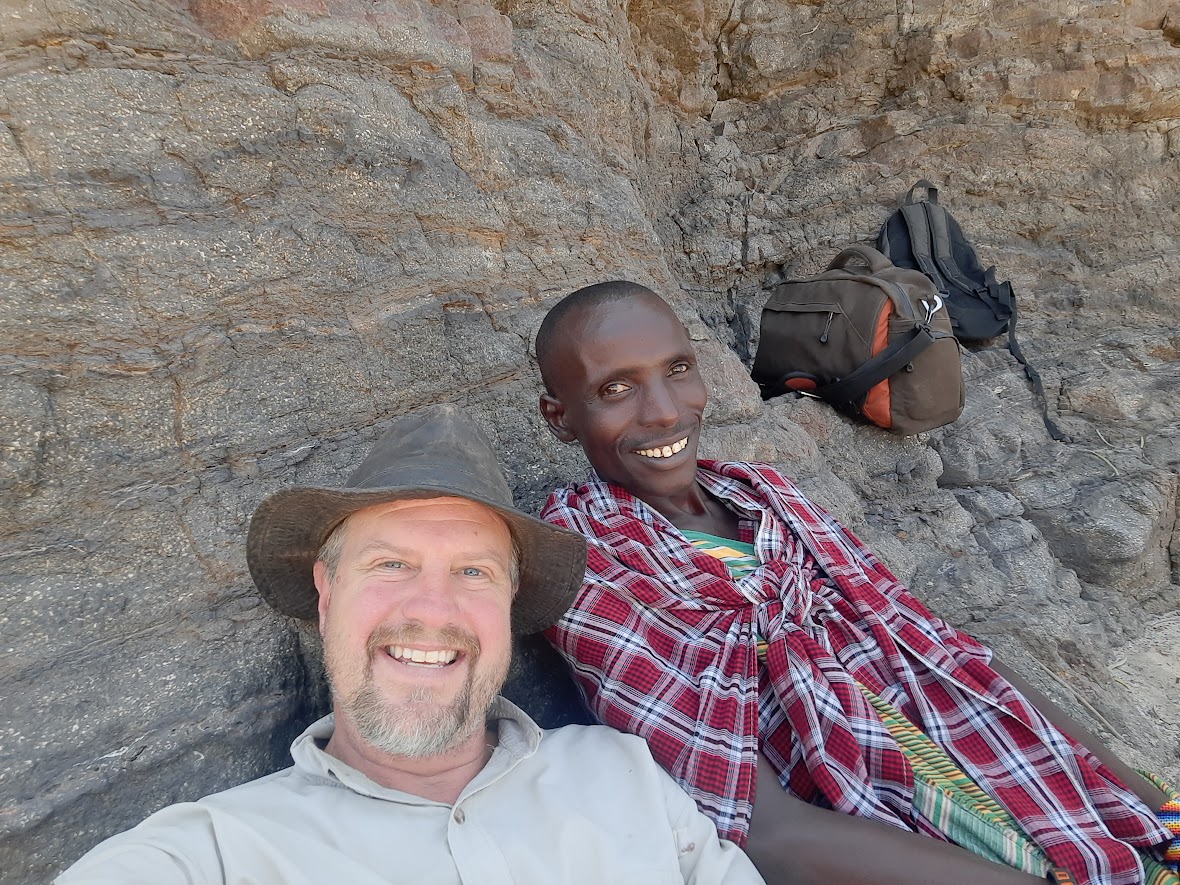
Bio: Dr. Brian M. Hynek is Professor in the Department of Geological Sciences and Laboratory for Atmospheric and Space Physics at the University of Colorado Boulder. He has spent the last 25 years studying Mars and its potential to host past life. Brian is a world expert on the study of modern terrestrial analogs to understand geological processes that operated on early Mars and the Moon, with recent field-based projects spanning five continents. He has worked extensively with NASA, conducting mission simulations in preparation for robotic and human exploration of the Moon and Mars. Brian has published over 80 peer-reviewed scientific papers, multiple book chapters, and hundreds of conference abstracts.
View Zoom recording of Using Modern Earth to Assess Life on Ancient Mars
Watching this video is best in full screen. (It may sharpen up images.)
No passcode is needed to access this recording. Just click on the video.
Duration: 01:05:52
DISCLAIMER and FAIR-USE STATEMENT: The following Zoom-meeting recording contains content that expresses the opinions, viewpoints, and conclusions of the speakers and does not necessarily reflect the views, policies, or endorsements of the Colorado Scientific Society. This recording is made available to the public for general information and educational purposes only and is not intended to be used for profit. Any use of copyrighted material included therein for other purposes must obtain express written permission from the author.



